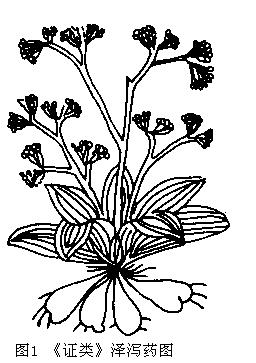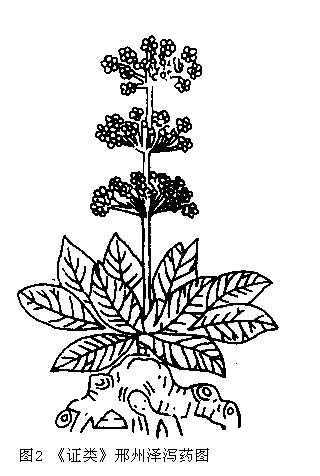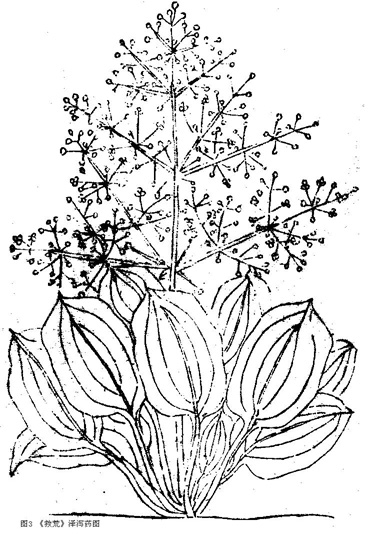| title | Alisma |
| release time | 2006/3/12 |
| source | Jade Knock Studio |
Alisma is the dried tuber of the Alisma orientalis (Sam.) Juzep., a plant of the Alismataceae family. Alisma is mainly produced in Fujian, Sichuan, and Jiangxi provinces, primarily through cultivation. It is also produced in Guangdong, Guangxi, Hubei, and Hunan provinces, with Fujian and Sichuan being the most renowned, commonly referred to as Jian Alisma and Chuan Alisma. Jian Alisma is mainly produced in Jianyang, Jian'ou, Pucheng, Shunchang, Tong'an, Longhai, Fuqing, Nan'an, and Zhangpu in Fujian, as well as Guangchang, Shicheng, and Yudu in Jiangxi. Chuan Alisma is mainly produced in Dujiangyan, Meishan, Pengshan, Chongzhou, and Qianwei in Sichuan.
Materia medica research suggests that medicinal Alisma has been recognized as the genuine product from the Alisma genus of the Alismataceae family since the Bencao Jing. Based on the illustrations in the Bencao Tujing, Alisma orientalis has been the mainstream since the Song Dynasty. From the Six Dynasties to the Ming Dynasty, Alisma from the Hanzhong area of Shaanxi was considered superior. After the Ming Dynasty, the genuine production areas shifted to Sichuan and Fujian. In Sichuan, it is mainly distributed in the Chengdu area and its surroundings in western Sichuan, while in Fujian, it is found in Nanping City and its vicinity.
bubble_chart Varietal Examination
The "Book of Songs · Wei Feng" states: "Gathering the Xu." Mao's commentary explains: "Xu is water plantain." The "Shuowen" agrees, and Lu Ji's annotation adds: "Now it is called Ze Xu, its leaves are large like plantain, and its taste is similar." However, the "Erya" differs slightly, identifying "Yu" as Alisma and "Xu" as Dipsacus. "Yu, Xie." Guo Pu's annotation states: "Now called Ze Xie," and Xing Bing's commentary explains: "Yu is also called Ze Xie, which is the medicinal herb Ze Xie." Additionally, "Xu, Niu Chun." Guo's note: "As stated in the Mao Shi Zhuan, it is water Xie, resembling Dipsacus, with segments that can regenerate when pulled." Among various annotations, Lu Ji's description of Alisma resembles plants of the Alismataceae family, while Guo Pu's description of water Xie resembling Dipsacus likely refers to plants like bottle brush herb.
Alisma is listed as a superior grade in the Bencao Jing, but the same plant holds different meanings in the eyes of Taoist immortals and literati. The "Taiping Yulan" volume 990 quotes the "Dian Shu": "Eating Alisma makes the body light, enabling one to walk five hundred miles a day, walk on water, swim endlessly, attract jade maidens, and become an immortal." The "Baopuzi Neipian · Xianyao" states: "The profound and extensive formulas, including Chu curly bristlethistle herb, Alisma, Rehmannia, Coptis Rhizome, and over three hundred other types, can prolong life and can be taken alone." On the other hand, Liu Xiang in the "Chu Ci · Jiu Tan" writes: "Baskets of Alisma with leopard skins, breaking Jing and He to continue building," with commentators interpreting Alisma as a noxious weed.It is not surprising that classical texts offer varying interpretations, but the Alisma used in the Bencao Jing can be considered essentially the same as the modern variety. The text states: "Grows in the ponds of Runan, roots harvested in May, June, and August." This Alisma grows by water, and its roots are used medicinally. It also has the alias "Mang Yu," likely describing its spherical tuber resembling taro. The text further claims that long-term consumption "lightens the body, brightens the complexion, and enables walking on water," possibly related to the lipid-lowering effects of Alisma alcohols A, B, C, and their derivatives found in the tuber, confirming its classification as an Alisma genus plant.
The "Bencao Jing Jizhu" states: "Large and long in shape, with a forked tail, is considered good. This substance is prone to decay and insects, so it must be stored carefully. The leaves are narrow and long, growing in clusters in shallow waters. The 'Xian Jing' mentions its use in fasting and medicine, also claiming it lightens the body and enables walking on water." According to Tao Hong-jing's description, it likely refers to the narrow-leaved Alisma canaliculatum A. Braun et Bouche.



The description of Alisma in the Jiuhuang Bencao of the early Ming Dynasty is much more accurate: "Now it is found everywhere by the water. It grows in clusters with seedling leaves, its leaves resemble those of the Plantain, with vertical veins. In the middle of the leaf cluster, a stem emerges, branching into two, the stem has linear ridges, and at the tip, it blooms with three small white petals, bearing small green fruits." Zhu Xiao specifically mentioned "vertical veins," which was actually a correction to the net-like veins mistakenly depicted in the Xingzhou Alisma illustration. The attached medicinal illustration is also more standard, but since Jiuhuang only consumes its tender leaves, the underground parts were not depicted. (Figure 3) Unfortunately, subsequent materia medica works, such as Bencao Mengquan, Bencao Gangmu, and Bencao Huiyan, did not observe the plants personally as Zhu Xiao did. The illustrations of Alisma continued the errors in the tuber and leaf veins from the Zheng Lei illustrations. The only exception is Zhiwu Mingshi Tukao, Volume 18, but this book still did not depict the tuber.
bubble_chart Historical Evolution of Authentic Production AreasThe Bencao Jing states, "It grows in the ponds and marshes of Runan." Tao Hong-jing said, "Now it is also found near the roads, but it is not usable. Only those from Hanzhong, Nanzheng, Qingzhou, and Daizhou are used." The Xin Xiu states, "Now Runan no longer uses it, only those from Jingzhou and Huazhou are considered good." The Qianjin Yifang and the records of medicinal origins also agree. The Bencao Tujing states, "Now it is also found in Shandong, He, Shan, Jiang, and Huai regions, but those from Hanzhong are the best." The Zheng Lei illustrates Alisma from Xingzhou and Qizhou. Zhiwu Mingshi Tukao, Volume 18, quotes the Fuzhou Chronicles: "Linchuan produces Alisma, its roots are round and white like small garlic."
According to the distribution of Alisma orientalis, although it is widespread, relatively speaking, from the time Tao Hong-jing mentioned that Alisma from Hanzhong and Nanzheng was superior, until the Ming Dynasty, those from Shaanxi were considered authentic. The Da Ming Yi Tong Zhi, Volume 32, records that Shaanxi's local products include Alisma, "found in the waters north of Zhouzhi County," which is now abbreviated as Zhouzhi County. The Qing Dynasty's Shaanxi Tong Zhi, Volume 43, quotes the Tu Shu Bian: "It grows in the shallow waters north of Zhouzhi County," and also quotes the Huayin County Chronicles: "Alisma is relatively good."
However, Shaanxi's advantage in Alisma production was no longer maintained in the Qing Dynasty. According to the 1940 regulations of the Xi'an City Traditional Chinese Medicine Business Association, the production areas of Alisma are "Sichuan, Fujian, Shandong, Henan, Shaanxi, etc." The order of listing, with Sichuan and Fujian first and the local province last, reveals the shift in the authentic production areas of Alisma.
The Zhengzhi Zhunsheng, Volume 93, Alisma Powder already mentions the name of Sichuan Alisma, but the history of Alisma cultivation in Sichuan still needs further study. The 1909 publication Chengdu Tonglan, under the entry "Local Products of Chengdu and Its Subordinates," records that Chongqing Prefecture (now Chongzhou City, Chengdu) produces Alisma. As for Fujian Alisma, the Fujian Tong Zhi, Volume 11, records that Yanping Prefecture (now Nanping City, Fujian) produces Alisma: "It grows in clusters in shallow waters, its leaves resemble those of the Plantain, with a single long stem, and white flowers." The Yaowu Chuchan Bian states, "The best comes from Jianning Prefecture, Fujian," which is now Nanping City. Nanping Alisma was already famous in the early Qing Dynasty. Zhu Yizun's Pashu Ting Ji, Volume 18, contains a poem about staying overnight in Yanping: "The floating bridges slant towards the shore, the residents share the white egret sand. Melons and beans are sold to the boats, only missing the Alisma flowers from the southern village." The note states: "Jianning produces Alisma, its flowers are edible, but I missed buying them yesterday."
bubble_chart Other Related Items

